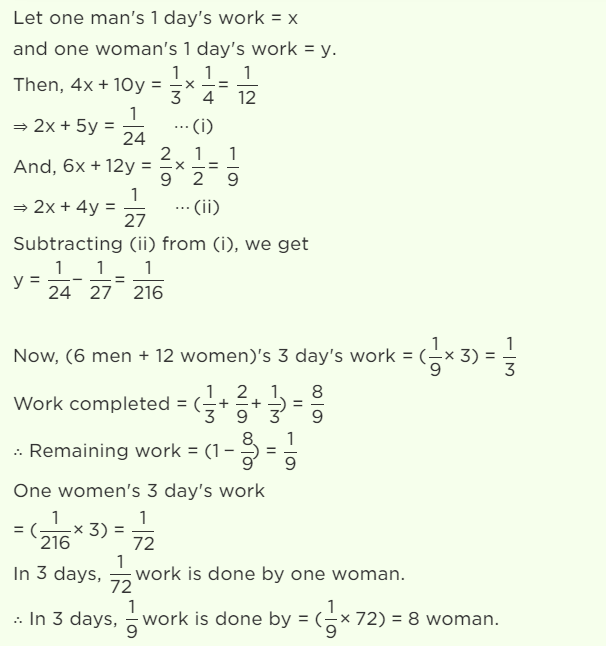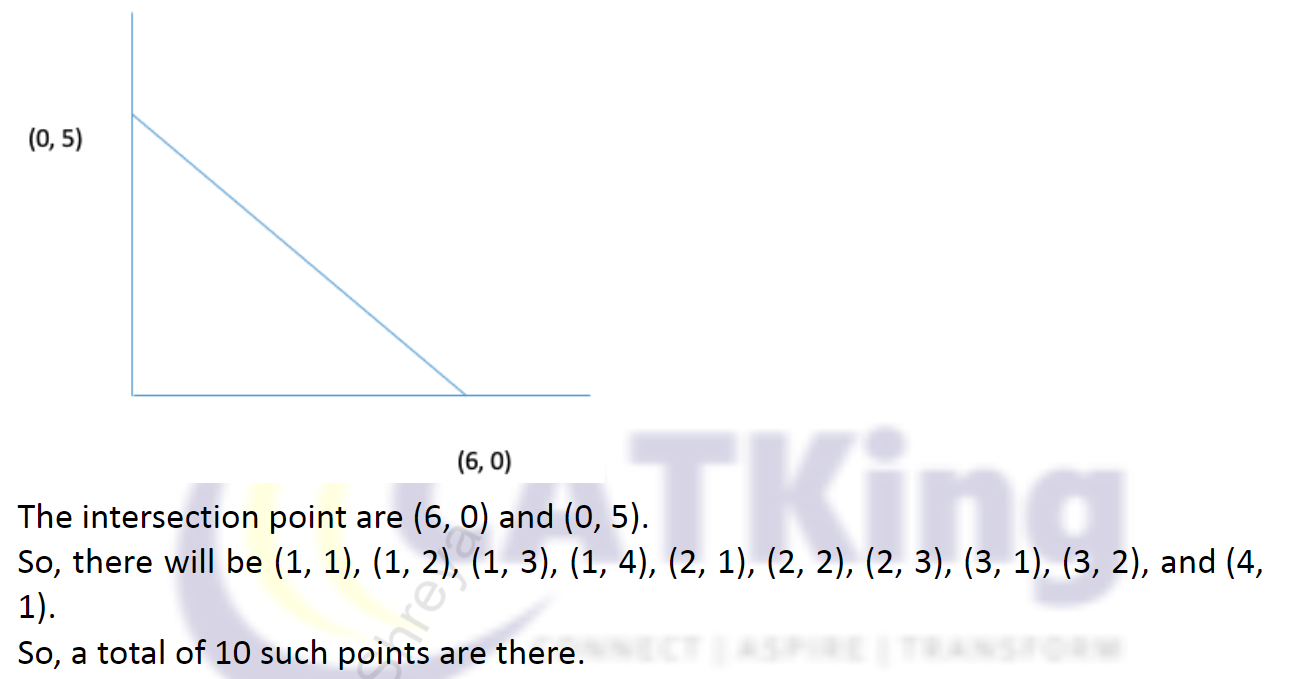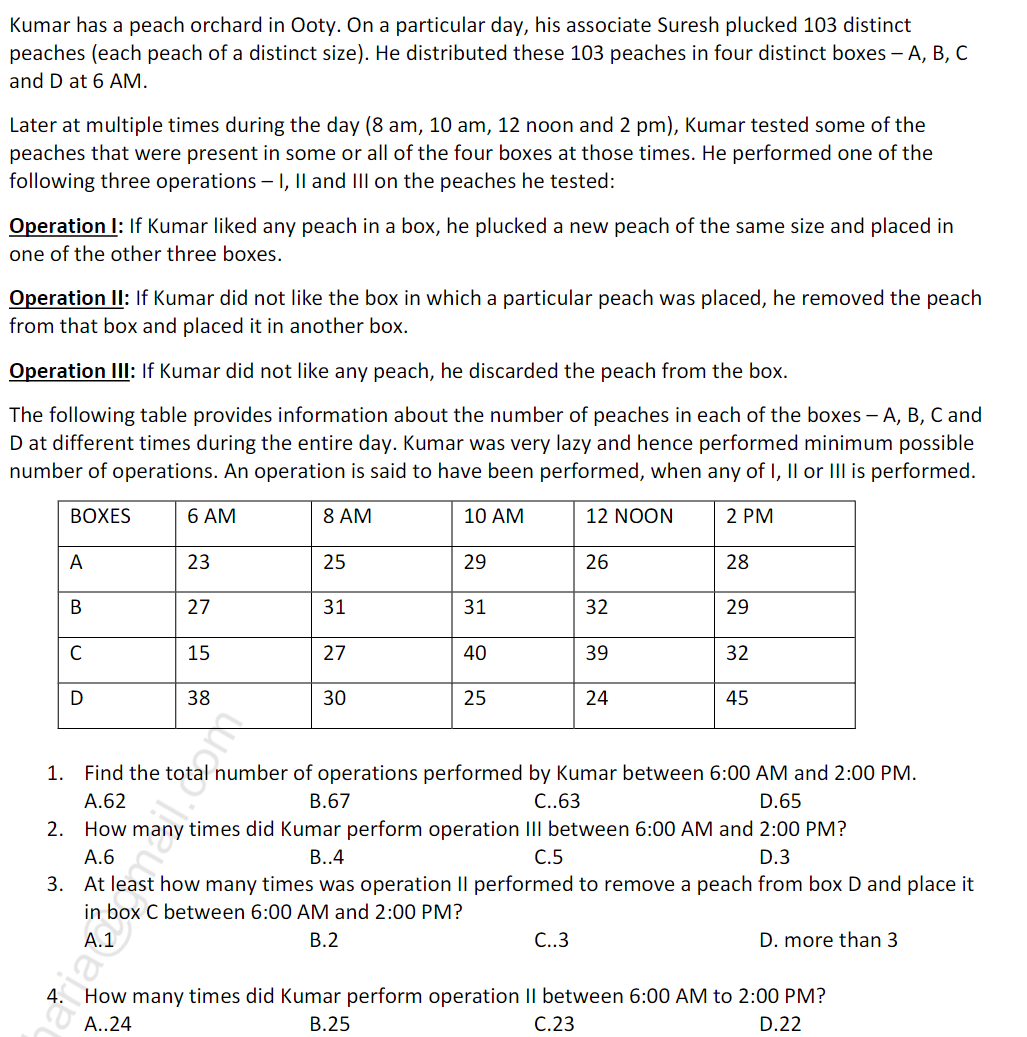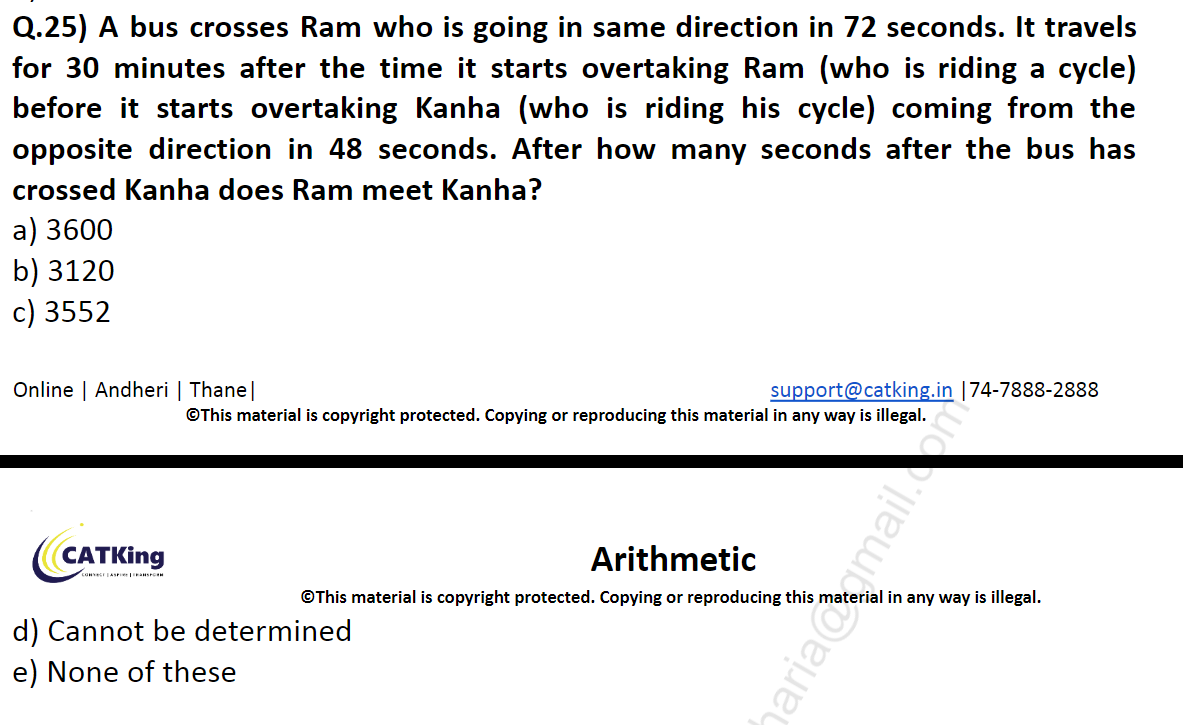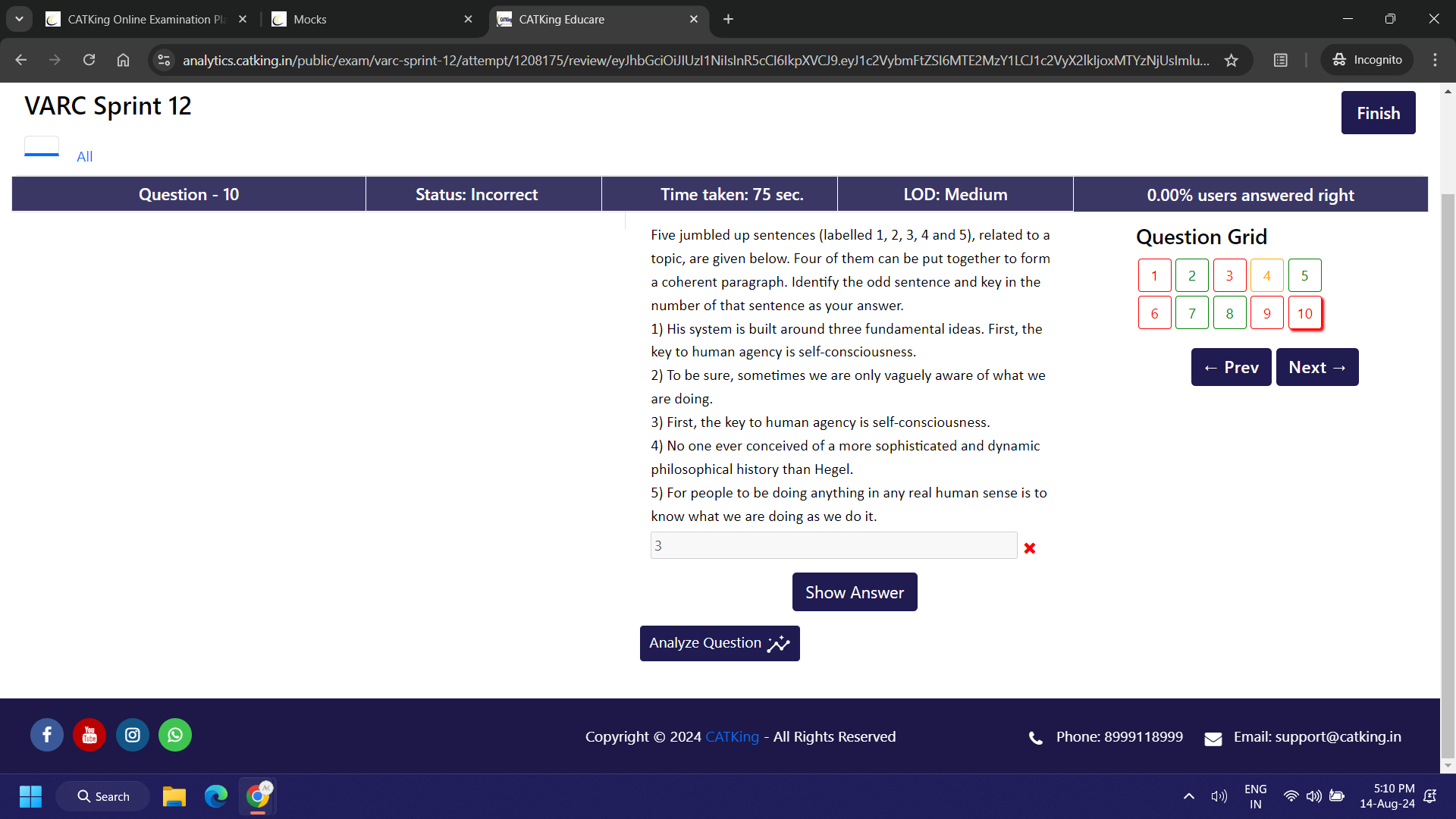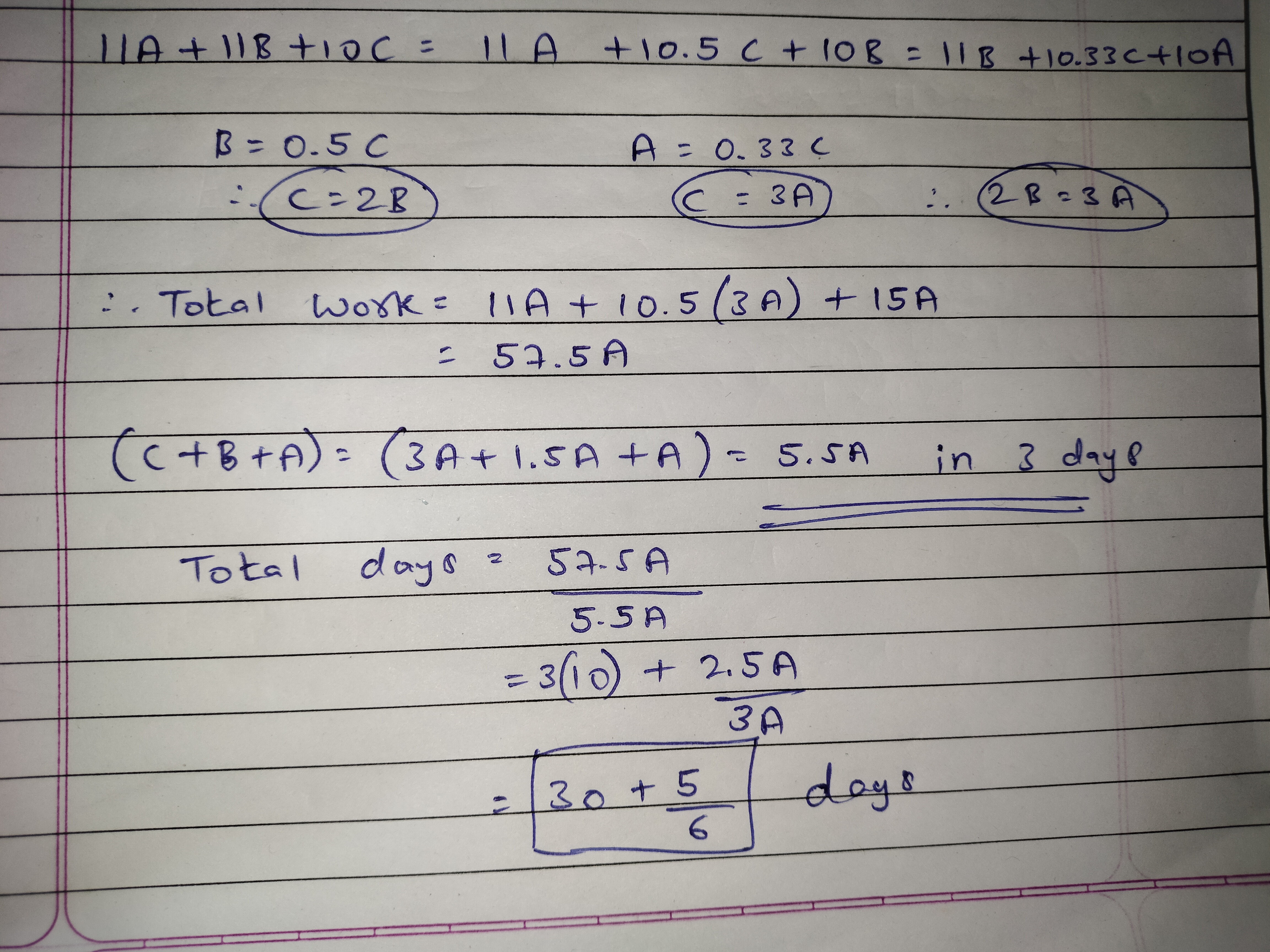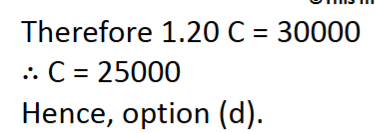Started 3 weeks ago by GOWTHAMAN SHIVKUMAR in
68 Replies
-
Replied 3 weeks ago
unable to understand There are 3 cities A, B, and C which are non-collinear. The number of ways in which one can go from A to B is x. The number of ways in which a person can go from B to C is x2 and the number of ways in which a person can go from A to C is x3. These are the only connected paths. If the total number of ways of reaching C from A is 54, then find the probability that when a person goes from A to C, he chooses one of the paths on the B-C trail.
Replied 3 weeks ago
unable to understand There are 3 cities A, B, and C which are non-collinear. The number of ways in which one can go from A to B is x. The number of ways in which a person can go from B to C is x2 and the number of ways in which a person can go from A to C is x3. These are the only connected paths. If the total number of ways of reaching C from A is 54, then find the probability that when a person goes from A to C, he chooses one of the paths on the B-C trail.
Replied 3 weeks ago
unable to understand if a b and c are 3 consecutive integers between -10 to+1 ( both inclusive), how many integer values are possible for the expression ((a^3+b^3+c^3+3abc)/(a+b+c)^2)
Replied 3 weeks ago
unable to understand if a b and c are 3 consecutive integers between -10 to+1 ( both inclusive), how many integer values are possible for the expression ((a^3+b^3+c^3+3abc)/(a+b+c)^2)
Replied 2 weeks ago
unable to understand There are a specific number of M ( Male Workers) and F (Female Workers) in a group. A F can work 1.5 times as quickly as a M. They can complete the task in five days if they collaborate. They can complete the task in four days if the number of Ms and Fs is switched around and one more F is added to the group. If the initial group of Ms and Fs work at a rate that is 250% of a M's efficiency and one F joins them who works at the original rate, how many days will it take them to do the work?
Replied 2 weeks ago
unable to understand There are a specific number of M ( Male Workers) and F (Female Workers) in a group. A F can work 1.5 times as quickly as a M. They can complete the task in five days if they collaborate. They can complete the task in four days if the number of Ms and Fs is switched around and one more F is added to the group. If the initial group of Ms and Fs work at a rate that is 250% of a M's efficiency and one F joins them who works at the original rate, how many days will it take them to do the work?


